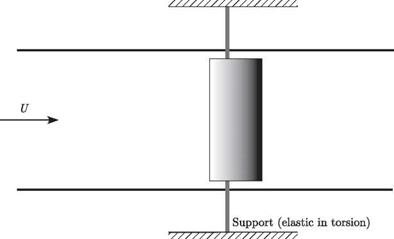Static Aeroelasticity
I discovered that with increasing load, the angle of incidence at the wing tips increased perceptibly. It suddenly dawned on me that this increasing angle of incidence was the cause of the wing’s collapse, as logically the load resulting from the air pressure in a steep dive would increase faster at the wing tips than at the middle. The resulting torsion caused the wings to collapse under the strain of combat maneuvers.
—A. H. G. Fokker in The Flying Dutchman, Henry Holt and Company, 1931
The field of static aeroelasticity is the study of flight-vehicle phenomena associated with the interaction of aerodynamic loading induced by steady flow and the resulting elastic deformation of the lifting-surface structure. These phenomena are characterized as being insensitive to the rates and accelerations of the structural deflections. There are two classes of design problems that are encountered in this area. The first and most common to all flight vehicles is the effects of elastic deformation on the airloads, as well as effects of airloads on the elastic deformation, associated with normal operating conditions. These effects can have a profound influence on performance, handling qualities, flight stability, structural-load distribution, and control effectiveness. The second class of problems involves the potential for static instability of the lifting-surface structure to result in a catastrophic failure. This instability is often termed “divergence” and it can impose a limit on the flight envelope. Simply stated, divergence occurs when a lifting surface deforms under aerodynamic loads in such a way as to increase the applied load, and the increased load deflects the structure further—eventually to the point of failure. Such a failure is not simply the result of a load that is too large for the structure as designed; instead, the aerodynamic forces actually interact with the structure to create a loss of effective stiffness. This phenomenon is explored in more detail in this chapter.
The material presented in this chapter is an introduction to some of these static aeroelastic phenomena. To illustrate clearly the mechanics of these problems and yet maintain a low level of mathematical complexity, relatively simple configurations are considered. The first items treated are rigid aerodynamic models that are elastically mounted in a wind-tunnel test section; such elastic mounting is characteristic of most load-measurement systems. The second aeroelastic configuration to be treated is
|
Figure 4.1. Planform view of a wind-tunnel model on a torsionally elastic support |
a uniform elastic lifting surface of finite span. Its static aeroelastic properties are similar to those of most lifting surfaces on conventional flight vehicles.












